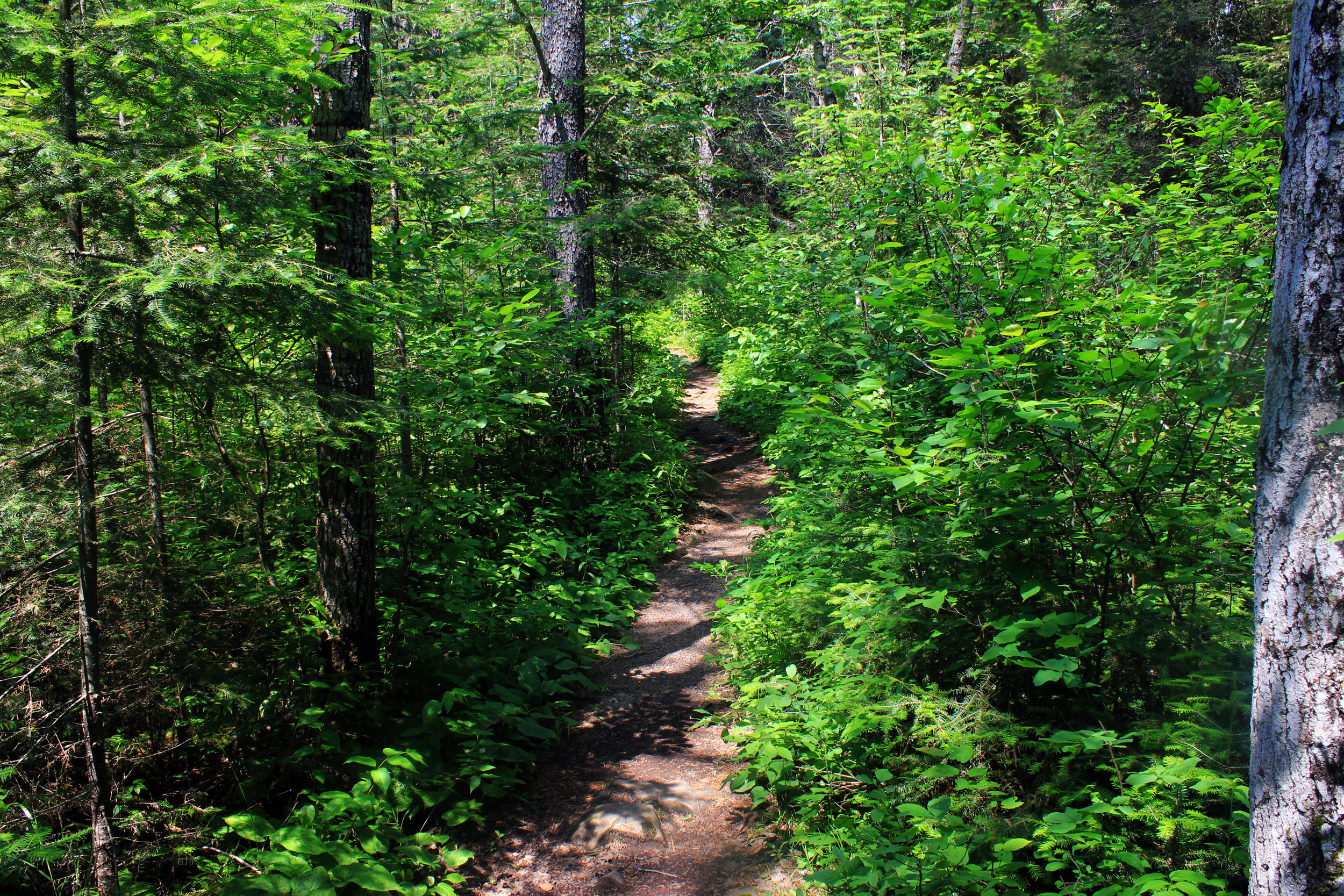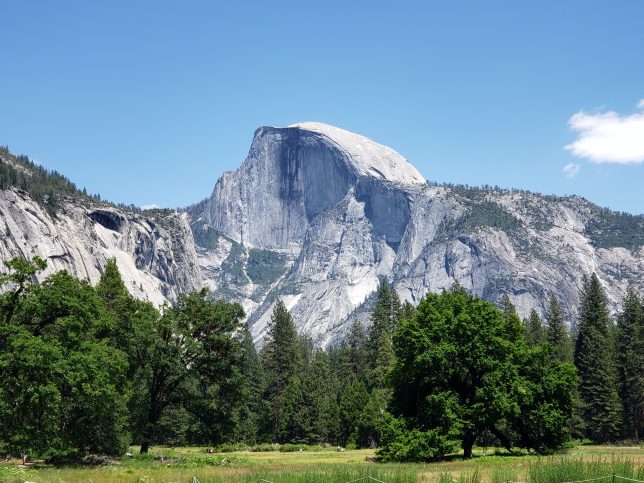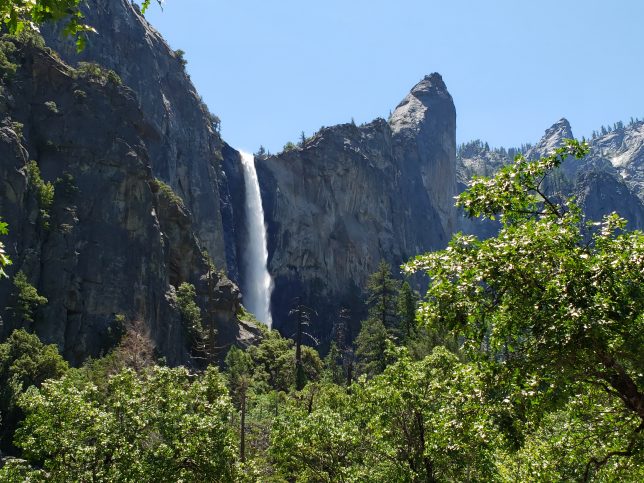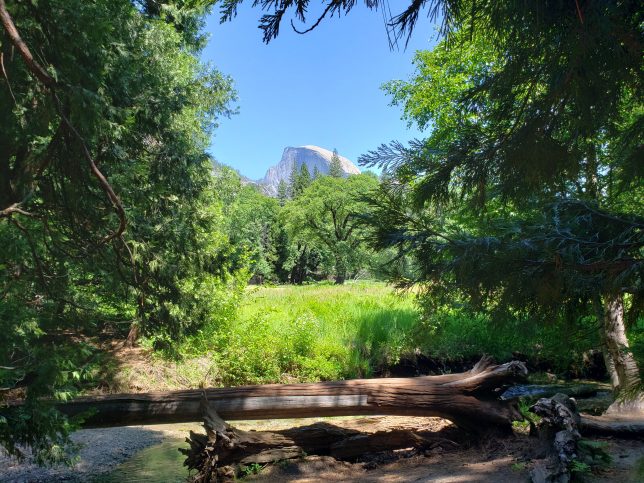
Yosemite Valley, among the trees, in June 2023. Credit: Diana Bald
America’s national parks are powerful and beautiful. They are scenic vacation spots and part of our shared heritage. They are home to countless wildlife species and natural protectors against climate change. Recently, concerns have grown about privatization—the idea of private companies taking over or managing aspects of our national parks. Why does this matter? Privatization could change how these lands are cared for, possibly speeding up climate change and limiting public access.
Below we’ll share what privatization is, why it’s happening, and how it might put our parks—and our planet—at risk. You’ll learn about potential harm to wildlife and ecosystems and see how private profit-seeking might increase carbon pollution. Finally, we’ll look at the different sides of the debate and share ways you can help protect these treasures for future generations.
What Is National Park Privatization?
Privatization of national parks means involving private companies in running parts of a park—or, in more extreme cases, selling park land. While the second option is very rare and highly controversial, there are other, more common ways private interests can step in.
- Concessions: This is when private businesses manage hotels, restaurants, campgrounds, or gift shops inside a national park. A company might build and operate a lodge while paying fees to the government.
- Public-Private Partnerships: The government owns the park but hires or partners with a private operator to handle daily services, like cleaning facilities or running visitor centers.
- Outright Sale: In uncommon situations, park land could be sold to a private entity, meaning it is no longer publicly owned.
Why It’s Happening
Many parks have significant funding gaps. According to the National Park Service (NPS), national parks in the United States face an estimated $11.9 billion maintenance backlog, meaning there’s a lot of work that needs to be done—like fixing roads, upgrading water systems, and repairing trails—but not enough money to do it all. Some people believe private companies can fill this gap by bringing in their own funds and running things more efficiently.
Why Do People Worry About Privatization?
Privatization sometimes gives private businesses room to push for more development—like building bigger hotels or even introducing commercial activities in delicate areas. This can mean fewer trees to absorb carbon dioxide, more greenhouse gas emissions from construction, and more energy use to support amenities like large resorts (Source: National Parks Conservation Association (NPCA)).
Loss of Public Control
Our national parks belong to all of us. When for-profit companies take a bigger role, everyday citizens can lose their say in how these lands are used. Government agencies like the National Park Service aim to protect wildlife, natural beauty, and our shared heritage. Private companies have a duty to earn profits. These two goals don’t always line up.
Risk of High Prices and Limited Access
Private businesses often raise fees to cover costs and make a profit. That might include higher prices for overnight stays, guided tours, or even basic park entry. Imagine a scenario where only those who can pay premium rates get to enjoy our national treasures. That kind of setup could exclude families on a budget or students looking to learn about nature firsthand.
How Could Privatization Speed Up Climate Change?
Privately built hotels, roads, and resorts can encroach on forests or wetlands that store carbon. Removing trees or filling in wetlands releases carbon that was previously locked away in plants and soil, adding to the greenhouse gases warming our planet.
When privatization weakens environmental protections, there’s a chance that companies will seek permission to mine, drill, or log on public lands near or even within parks. Extracting natural resources not only increases carbon emissions but also disrupts critical habitats for animals and plants.
A private operator looking for higher profits might want to draw large crowds. More visitors can be wonderful for education and appreciation, but it can also mean more cars, heavier traffic, and longer lines, all leading to additional exhaust fumes and higher greenhouse gas emissions.
Harm to Wildlife and Ecosystems
Big developments like roads, fences, or commercial sites can cut wildlife habitats into smaller pieces. When animals can’t move around freely to find food or migrate, their populations may decline. This fragmentation makes ecosystems more fragile and less able to bounce back from natural disasters linked to climate change.
Reduced Biodiversity
National parks often safeguard a vast range of plant and animal species. Overbuilding, pollution, and noise can push away or endanger species—leading to a drop in biodiversity. Healthy ecosystems rely on a balance of predators, prey, and plants. When that balance is lost, the entire system can unravel.
Less Resilient Ecosystems
Forests, wetlands, and grasslands inside parks help lessen the worst impacts of climate change by storing carbon, stabilizing soils, and buffering against floods. If these areas become fragmented or polluted, they can’t protect us as effectively from the rising threats of wildfires, severe storms, or droughts (Source: United Nations Environment Programme).
Different Sides of the Argument
We’re stunned by the concept of loosing national parks that belong to all of us to private ownership of a few. Privatization supporters argue that private companies could bring much-needed funding, potentially fix aging facilities, and even offer new innovations—like using clean energy in park buildings. They also point out that private partnerships might generate jobs for local communities. Critics worry that a focus on profit could weaken conservation efforts, possibly leading to higher entrance fees that shut out families or lower-income visitors. They also warn that private operators may not face the same level of public oversight, which could make environmental regulations harder to enforce.
Arguments For Privatization
- May bring more money to fix trails, roads, and park facilities.
- Could create jobs in local communities, especially around tourism.
- Potential for private innovation, such as using solar power in new building projects if the contract requires it.
Arguments Against Privatization
- Profit motives overlook long-term conservation and climate goals.
- Increased fees could limit public access and make visiting too expensive for many people.
- Less accountability and oversight mean environmental standards may not be enforced strictly.
Actions Concerned Citizens Can Take
You don’t need a science degree or a powerful position to help protect our parks. Here are some ways you can make a difference:
- Stay Informed
- Subscribe to newsletters from organizations like the National Parks Conservation Association or the Sierra Club.
- Monitor local and national news to learn about any privatization bills or policies that might affect your favorite park.
- Speak Up
- Contact your elected officials—call, email, or meet them at a town hall—and share your concerns about privatization proposals.
- Write letters to local newspapers or post on social media to raise awareness.
- Support Public Funding
- Advocate for strong public budgets for parks. For instance, the Great American Outdoors Act helps fund maintenance and conservation projects without relying solely on private money.
- Encourage your community to vote in favor of bond measures or other funding initiatives that keep parks public and well-maintained.
- Volunteer and Donate
- Donate to nonprofits dedicated to conservation and biodiversity.
- Look for volunteer programs in local or national parks, where you can help maintain trails or educate visitors about conservation.
Final Thoughts
National parks belong to everyone. While privatization might seem like a quick fix to budget problems, it can have serious effects on our climate and on the health of these special places. Private operators could prioritize profits over the long-term well-being of wildlife and ecosystems, leading to more carbon emissions and less public involvement.
By staying informed, speaking up, and supporting strong public funding, you can help protect national parks for generations to come. Your voice matters in deciding how these natural wonders should be cared for. With a little effort, we can make sure our parks remain open, wild, and resilient in a changing climate—leaving a healthy legacy for those who come after us.




